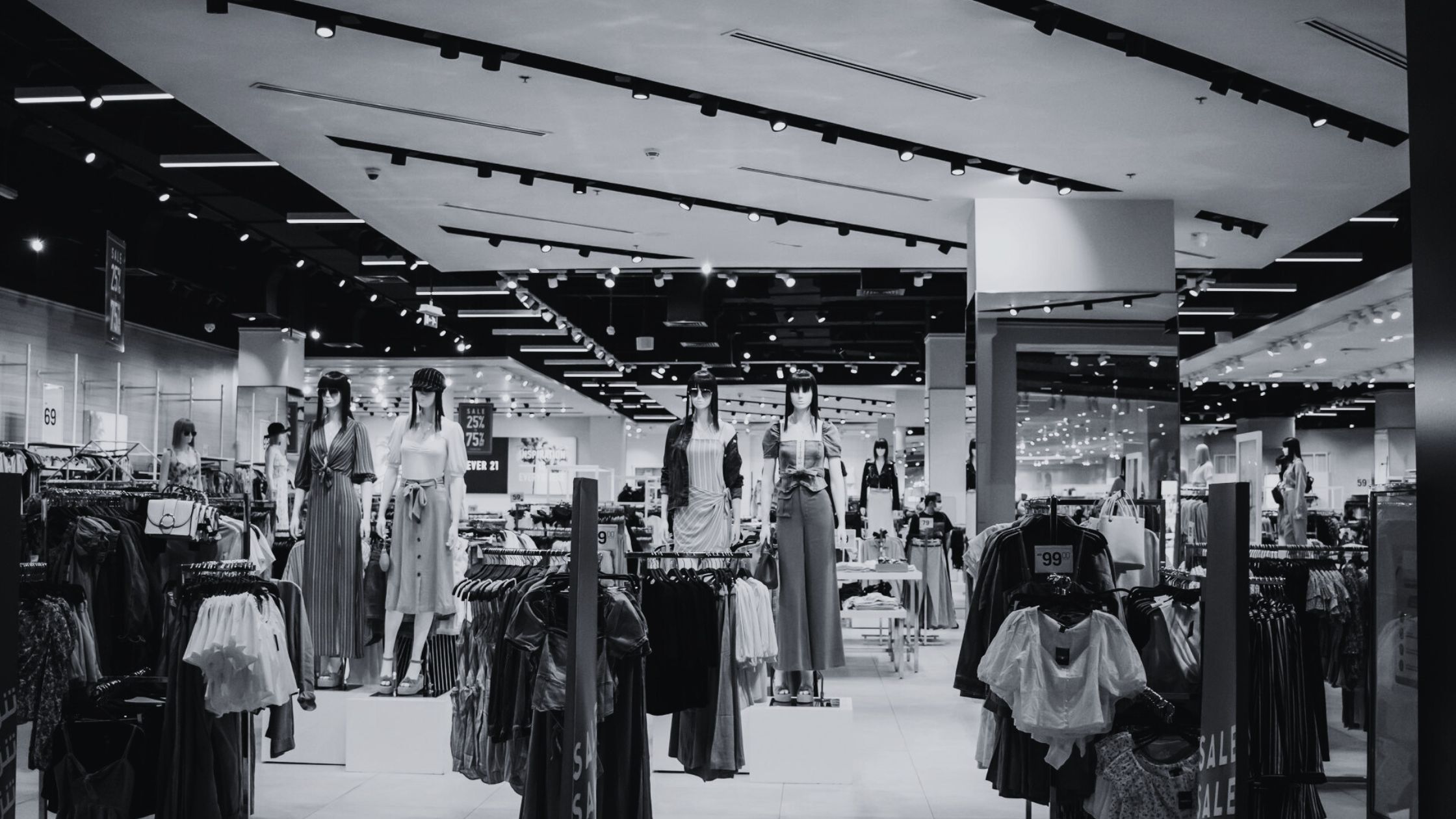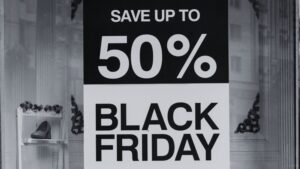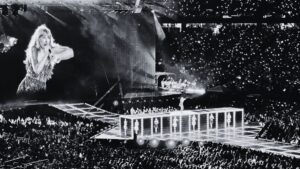Retailers are bracing themselves as we enter the new year. Last year gave us AI breakthroughs, unique shopping experiences, and the continued growth of celebrity commerce. This year we’re expecting to see more innovative retail sales trends and carefully targeted campaigns as the cost-of-living crisis doesn’t appear to be going away.
In recent years, retail has survived a pandemic, store closures, and decreased foot traffic. 2025 is the year of potential opportunity, if retailers can grab it by the horns. Read our retail industry forecast to check out the latest trends below.
See how retail trends are shaping each year, month on month, in our Retail Pulse report. Our analysis uses data with the highest in market accuracy – 94% correlation to ground truth, over 15 data inputs, and a full 90 days of predictive feeds.
Jump to:
- In-store retail goes digital
- Customers looking for cost savings
- Big-name influencers bringing in the big crowds
- AI
- New methods to keep customers coming back
- Short term retail
- Demographic shifts
- Window displays
- Live stream shopping
1. In-store retail goes digital
2025 is the year retailers will optimize the way digital experiences are delivered in-store.
Seamless experience – not forcing customers to switch to their phone just to shop and have the best experience, but enhancing what’s already there.
Store apps
Customers use a store app in-store to check product prices and availability as well as looking for discounts.
Optimizing your app and giving customers more reason to use it can offer a greater personalized experience and boost customer loyalty. 51% of customers who use retail mobile apps use them while shopping in-store – this is a key customer segment that is already ready and looking to buy!
Screens
Digital screens in-store can offer an interactive, entertaining, and accessible experience. According to one survey, 77% of customers found that digital screens were either “very” or “quite” informative. 50% of consumers also said that digital screens encouraged them to make a purchase “right there and then” and 53% that they gave them all of the information they needed to make a purchase. Digital screens are an opportunity to communicate important messages or push sales and we see more retailers using this year.
2. Customers looking for cost savings
About 93% of shoppers use a coupon or discount code throughout the year. Discounts, sales, and product coupon are expected and can be the final reason needed for a customer to make a sale.
As the cost of living continues to rise and inflation hits household costs, second-hand retail is also a popular choice for customers. Globally, the $177bn secondhand clothing market could double in size by 2027 at a rate three times faster than the overall market, according to a recent report by the US marketplace ThredUp.
Our Black Friday analysis found consumers jumping on sales to make big purchases. For example, luxury retailer MCM Worldwide saw an increase of 36.91% in foot traffic during Black Friday.
Second-hand items can offer great savings for customers. Second-hand retailers should be preparing for more growth this year, while the rest of retail makes discounts and coupons codes a key part of sales campaigns.
3. Big-name influencers bringing in the big crowds
Creator commerce saw a rise in 2023 and we see this continuing into this year. Some major successes include:
- McDonald’s celebrity meals from big names including Travis Scott and BTS.
- The Barbie movie brought in $774m after its first week in theaters. The pink sensation drove up toy maker Mattel’s doll sales by 27%. Other retailers also benefited from the marketing boon.
- The Taylor Swift Effect. While the entertainment industry affecting retail isn’t new, Swifties planned to spend an average of about $1,300 per show (including tickets, food and drink, merchandise, etc).
- Beyonce’s hit song increased Levi’s foot traffic by 19.87%.
In short, big names and trends can greatly influence retailers in the short term. But retailers need to be careful here. While this tactic appeals to younger generations or fans of the celebrity, overuse of influencer-based marketing and products can quickly grow tiring and too obvious. Carefully analyze when best to utilize this trend to get the most out of it.
Read more: Report: The Beyoncé Effect – New Track Boosts Levi’s Foot Traffic by 19.87%.
4. AI
Artificial Intelligence (AI) is a retail industry trend here to stay. Many retailers are now using this technology across their operations from the warehouse to digital marketing.
Nako Cosmetics ran a pilot program using AI for product recommendations and discovered “[the] hyper-personalization led to a 28% uptick in repeat purchases and a 15% increase in average order value.”
Nako isn’t the only company using AI to innovate personalization. According to a global survey conducted by Forrester Consulting and commissioned by Emarsys, 54% of retail marketers are using AI-driven personalization across channels.
“Critically, AI enables the rapid processing of raw data, making it accessible to workers in a manageable and actionable format. As a result, AI democratizes these once-inaccessible insights and empowers individual stores to compete with some of the largest retailers in the world,” James Ewen, Marketing Manager at pass_by.
Read more: How AI is helping Retailers Stay Competitive
5. New methods of encouraging customers to stick around for longer and visit more often
Once you have customers visiting your store, how do you keep them around for longer? The longer the average shopping time, the more a store sells.
Offering in-store experiences and adjusting store layouts have been the obvious answers for a long time, but thanks to technology and innovation solutions across the industry, more options are now on the table.
- EV charging: For stores with car parking spaces, EV charge points are worth considering. These customers tend to be high-value and, since the EV will need time to charge up, customers are naturally going to wait nearby for their vehicle to finish.
- Car washes: This can be an extra reason to visit your store and offer something different if your competitors aren’t using this.
- Food areas: After doing their shopping, customers can take a break and enjoy a drink or meal. This can also look like a vending machine of drinks to catch customers as they’re leaving the store.
- In-store events: Workshops are the popular solution to get people in-store, advertise, and receive an additional income to boot.
- Kids corner: Many customers shop with their children! Some retail locations may be able to offer a child-friendly space for play.
6. Short term retail
A survey found that brands experimenting with a pop-up shop reported a 46% increase in sales, a 51% rise in market visibility, and 66% greater brand awareness.
Short-term retail experiences aren’t just beneficial for retailers looking for a boost in sales and marketing but can be a great option for shopping malls to fill vacancies on a flexible basis.
Read more: How to Start a Successful Pop-Up Shop: From Concept to Cash
7. The big demographic shift
A staggering 70% of Gen Z and Millennials express a penchant for brands committed to diversity and inclusion. Later generations such as Gen Alpha are and will be more diverse, so retailers are best being aware of this now to best plan optimized outreach campaigns.
8. Stylish window displays
In-store displays can capture attention and drive interest online if done right. Utilizing brand-relevant props and messaging can make you stand out. If customers like the display, they can be encouraged to share it – some retailers go as far as offering giveaways, freebies, or discounts if you share a photo of the display with the right hashtags.
Customers can also get involved with stylish window displays with technology. You have the option of adding digital screens or using QR codes for discounts and other exclusive offers.
9. Live stream shopping
Live stream shopping is a huge trend in China, with one channel going viral for giving viewers just 3 seconds to make a purchasing decision before the product moves off-screen.
Analysis by Forbes concluded that livestream shopping is unlikely to take over the e-commerce space as this high-speed style is mostly suited to Chinese consumer wants and may not catch on with other demographics to grow more widely.
However, analysts acknowledge more use of video and live streaming is likely to grow – with some brands using the metaverse and AI to take full advantage of this new channel.
Our key takeaways
The future of the retail industry is ever-changing. The landscape isn’t going to look the same as it does now, nor as it did five years ago. As technology evolves, consumer demands shift, and sustainability becomes more pressing, retail trends this year is also transforming.
The new and emerging processes focused on convenience, customization, technology integration, and sustainability mentioned above, promise growth for any business willing to adapt to these retail industry trends. In the world of retail, it is crucial to be flexible, innovative, and willing to adopt new methods to meet consumer needs and expectations.
These trends not only reflect a shift in shopping habits but also serve as a roadmap for the future. Staying ahead of the retail trends will ensure businesses can navigate any future challenges and ultimately flourish in a rapidly changing industry. The future is here, and it is promising for both consumers and businesses alike.
At pass_by, we offer the highest in market accuracy with 94% correlation to ground truth, over 15 data inputs, and a full 90 days of predictive feeds. Book a call now.





